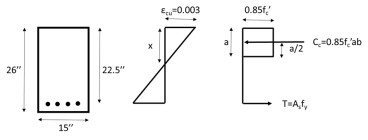Temporary structures
Temporary structures are constructions designed and erected for short-term use, often to serve a specific purpose or accommodate events. These structures are subsequently dismantled or removed once their usefulness is no longer required. They play a crucial role in providing adaptable solutions for events, construction projects, emergency situations, and other situations where a short-term setup is necessary. Temporary structures are designed with considerations for ease of assembly, transport, and disassembly. They often incorporate lightweight materials, modular components, and efficient assembly techniques to ensure quick setup and removal. Safety, functionality, and aesthetics are taken into account during their design and construction. These structures have a significant impact on various industries, offering flexibility and versatility without the need for permanent infrastructure.
Want to read more like this?

How advanced finite element analysis can prepare buildings for extreme events
Nov, 14, 2024 | NewsWhile most structural analysis software can evaluate everyday stresses, they often fail to prepare...
Structural loads
Sep, 07, 2023 | EducationStructural loads refer to the forces, pressures, and other external actions that act upon a struct...
Connections and joints
Sep, 14, 2023 | EducationConnections and joints refer to the critical elements in structural systems that serve as the link...
Soil structures
Sep, 07, 2023 | EducationSoil structures refer to constructions that involve the use of soil as a fundamental building mate...
Structure types
Sep, 07, 2023 | EducationThe term structure type refers to the classification or categorization of different architectural...
Plates
Sep, 14, 2023 | EducationPlates are flat, two-dimensional elements that serve a wide array of functions, from providing stab...
Masonry Structures
Sep, 07, 2023 | EducationMasonry structures have been used in historical buildings and continue to be used in contemporary...
Underground structures
Sep, 07, 2023 | EducationUnderground structures refer to constructions that are built beneath the Earth's surface, either p...

Steel or Timber? Carbon footprint of truss structures can be reduced with the aid of new studies
Nov, 29, 2021 | NewsBuildings contribute significantly to global warming, not just in their ongoing operations but in t...
Trending

Diaphragms
Structural stability

Nominal flexural strength of a reinforced concrete beam

Calculate the Maximum Shear Stress

Truss deflection using the unit load method

Overhanging beam: shear force and bending moment calculation

Calculation Example – Beam with inner hinge (Part A). Find the Reactions

